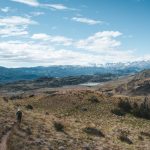The Valdés Peninsula in eastern Argentina is considered a paradise for whale watching. This small spot, which at 3,625 km² is actually not that small, is particularly impressive for its variety of marine and coastal animals. Penguins, elephant seals, sea lions, as well as the southern right whale and killer whales, also known as orcas, can be found here. The nature reserve on the Valdés Peninsula has been a UNESCO World Heritage Site since 1999.
In this article, we'll take you on a journey through this unique part of the world and share all the important information you need for an unforgettable whale watching experience. From costs and operators to tips on how to identify animal-friendly whale watching operators, here's everything you need to know to get the most out of your whale adventure on the Valdés Peninsula.
Which whales can you see on Valdes?
Southern Right Whale
In the second half of the year, southern right whales gather around Valdés to raise their young. This baleen whale species reaches a length of up to 18 meters and weighs up to 80 tons. The females are slightly larger than the males.
Southern right whales are considered a curious and sociable whale species, making them easy prey for whalers. Since 1935, southern right whales have been protected, and their populations are slowly recovering. Today, their global population is estimated at about 7,000 individuals.
Killer whales (orcas)
Orcas, also known as killer whales, belong to the dolphin family. They are found worldwide but vary in species. Every year from February to April and from September to November, orcas come to the shores of Valdés to hunt. Their intantional stranding to capture sea lion and elephant seal pups impresses nature lovers and professional wildlife filmmakers alike. Unfortunately, we didn't see any orcas during our visit.
Whale season – When is the best time to see whales?
The nature reserve offers a calendar overviewof when which animals can be seen on the peninsula. In addition to information about whales, you can also see when elephant seals, flamingos, and penguins can be seen.
Southern right whales are present off the shore of the peninsula from June to December. Orcas can be seen from February to April and September to November. Punto Norte, in the north of the reserve, is considered the best spot for orca sightings.
The Valdés Nature Reserve is considered one of the best places in the world to observe whales directly from the coast. It's worth climbing to a higher point on the coast, especially at high tide. The whales are easily identified by the blow, the splashing of water when they surface to breathe after diving.
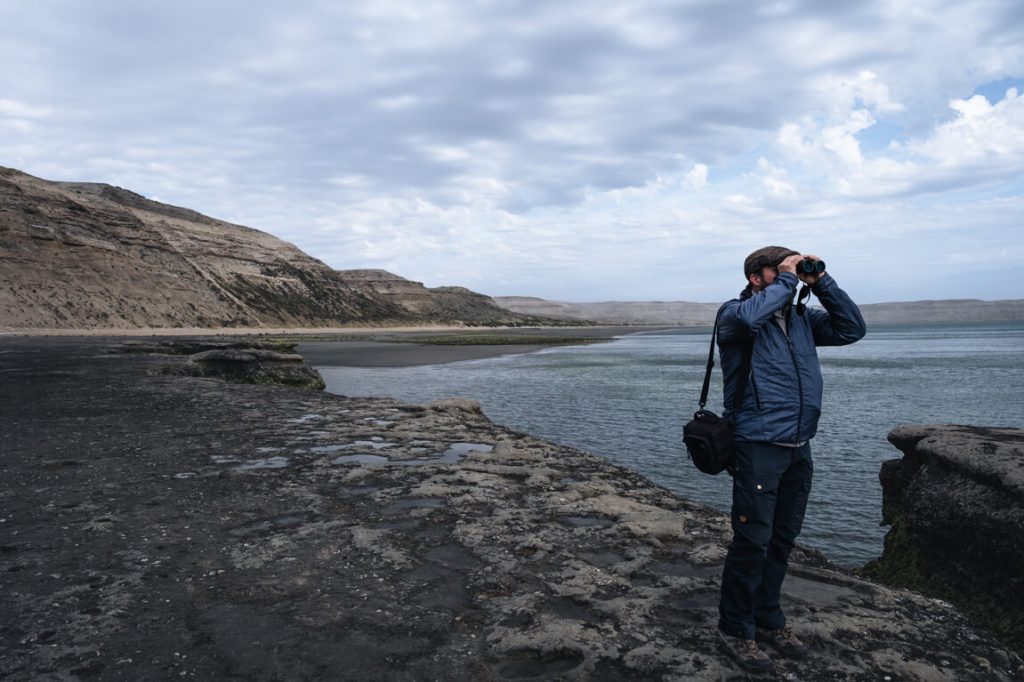
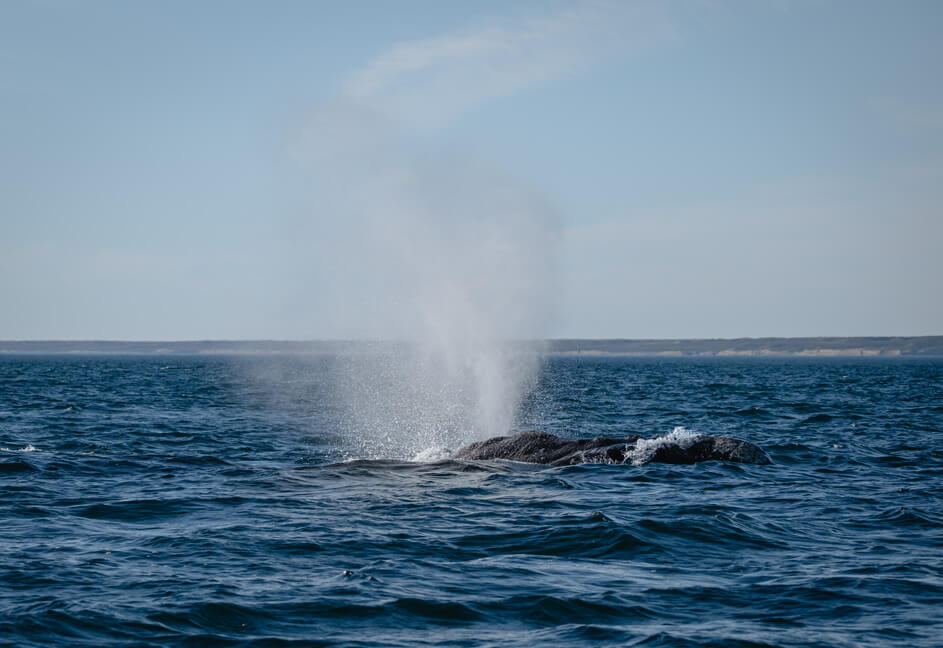
Whale Watching Itinerary – Boat Tour for Observing Southern Rights
We are sharing our whale-watching experience with about 30 other enthusiastic people. The trip begins with a thorough safety briefing from the operator. We are instructed on how to behave on board and how to treat the animals correctly and respectfully. We then receive life jackets and then walk together to the beach, where the boat and captain are already waiting for us.
A special feature here is that the boats are moored on the beach and are pushed into the water by a tractor-like vehicle and pulled out again after the tour.
Now it's time to set sail. Our boat is the only one in a wide area; more precisely, we can't see any other boats on the water. There's only one boat per spot at a time allowed to avoid harassing the whales. As soon as whales are nearby, the captain turns off the engine and lets the boat drift. The whales can then decide for themselves whether they want to approach.
The following hour at sea is breathtaking. It becomes clear here how many whales are actually in the bay. No matter where we direct our eyes, we repeatedly see the water splashing as the whales come to the surface to breathe or playfully poke their heads out of the water.
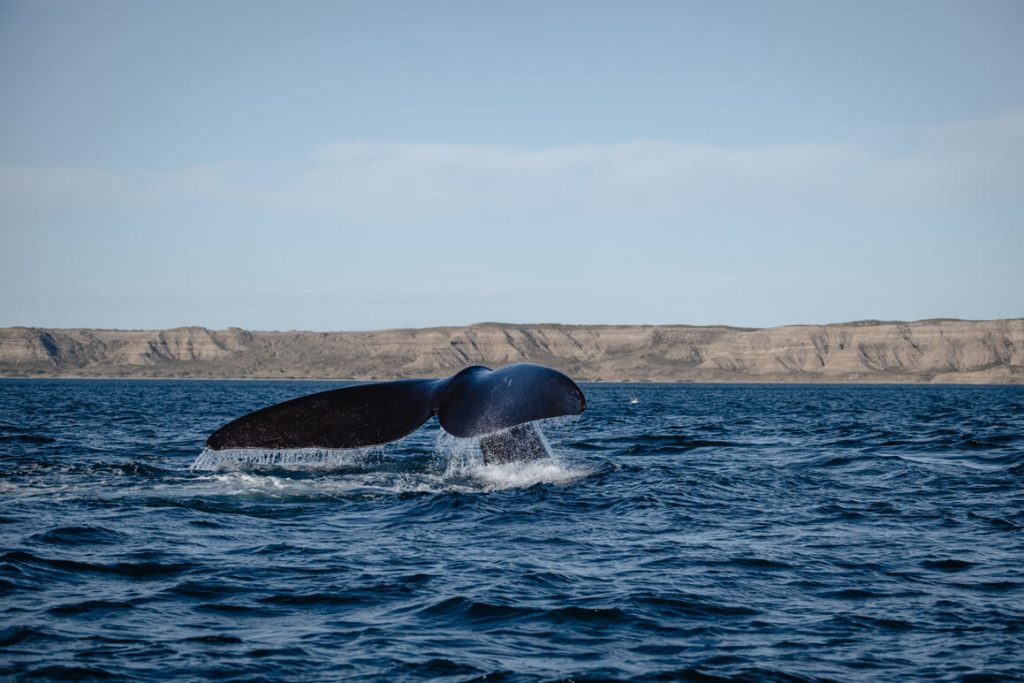
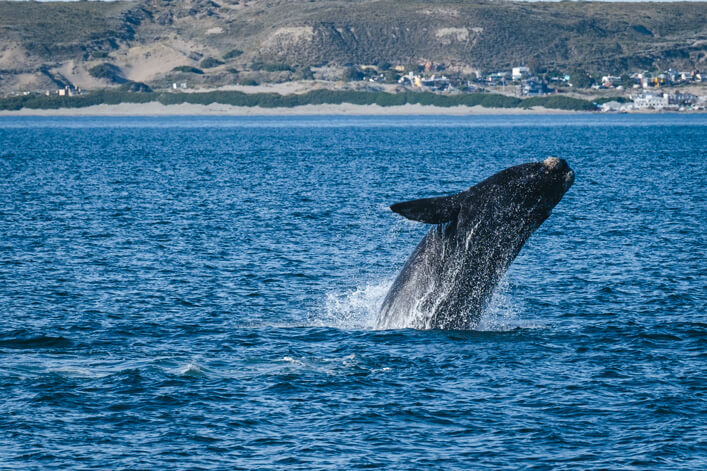
Providers of whale watching tours on Valdés
There are whale watching companies in Puerto Piramidis. During our research, we couldn't find any differences between the individual providers. The Google reviews of the different providers are generally similar, and the prices are also the same.
We took our boat trip with Southern Spirit and can highly recommend this company.
Costs for the nature reserve and whale watching
Park entry costs
As a tourist without residency in Argentina, the entrance fee for the park is 30,000 pesos for everyone aged 12 and older (as of December 2023). Children aged 5 to 11 pay 15,000 pesos. Everyone under 6 has free admission. The ticket is valid for multiple days.
The current prices can be viewed on the website of the nature reserve.
Costs for whale watching
The cost for a 1.5-hour whale watching tour is 46,000 ARG (as of December 2023). As mentioned, the providers seem to be coordinating and all charge the same prices. The tour can be booked directly with the selected provider.
Accommodation and Food
Overnight stay in the nature reserve
In the Peninsula Valdés Nature Reserve, overnight stays are only possible in the one inhabited place, Puerto Pirámides. Since we are traveling with our own camper, we stayed at the only campsite on the peninsula. Please note that wild camping is not permitted in the nature reserve.
The cost for the campsite is 4,000 ARG per person and 2,500 ARG for a camper van (as of November 2023). The campsite is spacious and located about a 5-minute walk from the beach. The showers and restrooms were very clean. However, the showers are only available in the evenings between 6 PM and 8 PM.
A negative aspect is the accumulation of trash at the campsite. Although trash bins are available throughout the area, garbage is often left behind and seems to go uncollected by anyone.
Food and supermarkets
In Puerto Piramidis, there are numerous restaurants and cafés available for those who prefer not to cook, like us. A supermarket that offers the essentials, along with two butcher shops, provides a good selection of food items. Additionally, there are several small convenience stores and kiosks in the town where you can find fresh fruits and vegetables, as well as canned goods and household products. There is also a gas station in Puerto Piramidis.
Whale watching – sustainability and animal welfare
We asked ourselves before our tour to what extent whale watching harms the animals or whether the revenues, for example, promote and support animal and species conservation. We would like to share and briefly summarize two articles we read on this topic. These are from Peta and WWF.
In general, one should be aware that all human activities in and on the sea can have consequences. So far, there are no uniform rules and regulations for whale watching tours worldwide, so it is important to choose providers carefully and with caution. Generally, there are some points that reputable providers consider, which can help identify them:
- The number and duration of trips in an area should be limited. Additionally, there should only be one boat in a given area.
- If motorboats are used, the engines should be turned off near the animals to reduce noise pollution.
- Animals should not be chased or pressured. Generally, boats should approach the animals from the side. A minimum distance of 100 meters is also required. The animals can then decide for themselves whether they want to approach the boat.
- The boat is navigated by trained professionals who understand the body language of the animals and remind participants to be considerate.
- Providers should share information about the animals and their habitat to raise awareness among participants about the animals and their protection, as well as enforce rules on the boat, such as prohibiting touching or feeding the animals.

